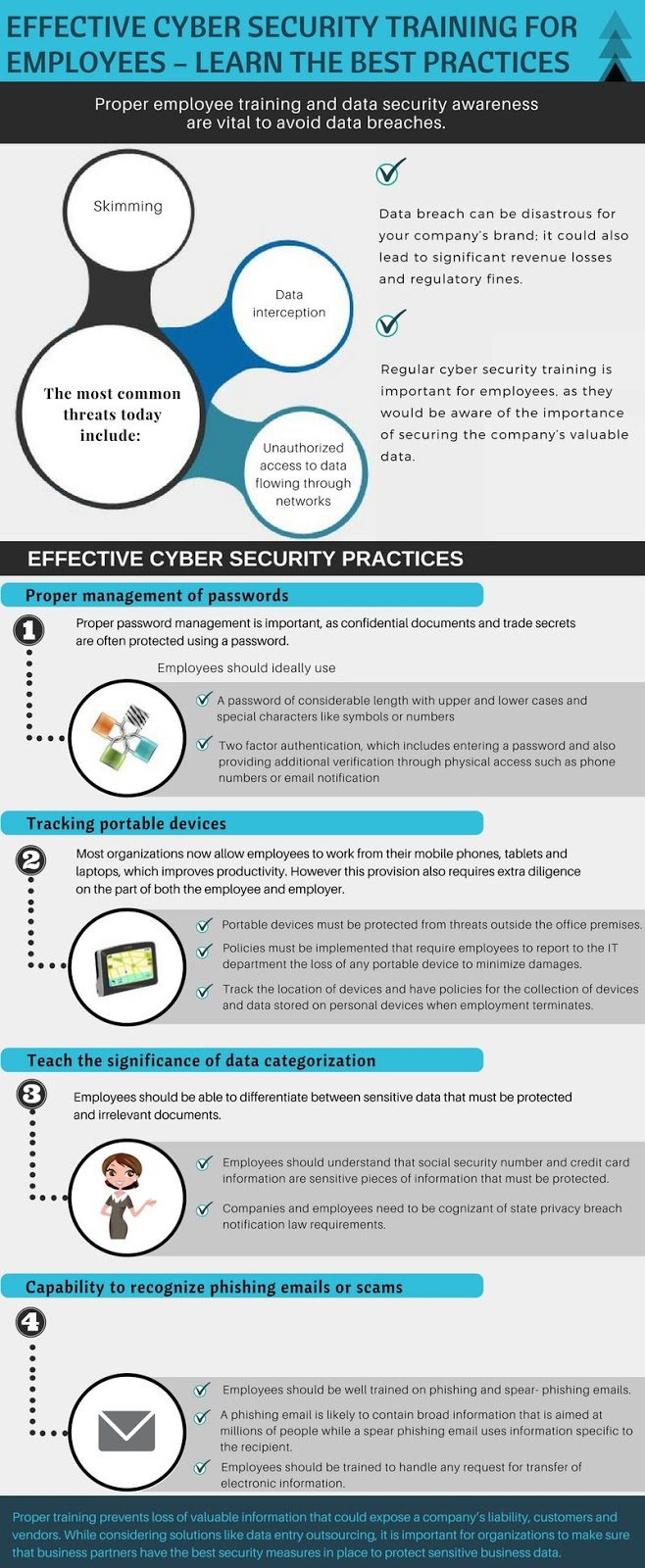Each and everyday cyber attacks keep on evolving, so Cyber security training for employees is very essential for today’s businesses to prevent digital assets from cyber attack.
Today’s businesses depend on digital systems and the internet in a way that nobody could have predicted just a few decades ago.
The rapid digitization that’s taken place has put technology into the hands of employees at all levels of organizations.
On the whole, that’s been a boon to productivity. It has also led to an exponential increase in digital risk to businesses.
Vulnerabilities in digital business infrastructure can leave a company vulnerable to cyber attacks. With technology spread so widely through the workforce, potential attack vectors are vast, and it’s everyone’s job to stay vigilant.
Unfortunately, most businesses neglect the human element of a sound cyber security policy. They do so at their own peril.
The good news is it’s an easy problem to fix. To help, here’s an overview of what businesses need to do to empower all employees to be front-line information security guardians.

Create Clear, Concise InfoSec Policies
One of the simplest things businesses can do to help their employees become allies in their cyber security efforts is to let them know what’s expected of them.
Although this might seem like an obvious bit of advice, it’s something that a shocking number of businesses neglect.
Research indicates that only 52% of businesses have documented information security policies.
The problem is especially prevalent in the SME sector, where IT operations are often outsourced and there’s no in-house oversight of employee technology use.
To remedy that problem, it’s essential to create and document comprehensive information security policies for employees to follow. The policy should include everything from accepted encryption measures to access control standards.
There are plenty of templates that businesses of all sizes can follow, so the process doesn’t have to be onerous. What’s important is to make sure all bases are covered, and in plain language that all employees can comprehend.
Invest in Cyber Security Training
For the most part, businesses tend to reserve their training budgets for job-specific skill-building, but neglect technology training.
That’s a big reason why many industries have become particularly vulnerable to phishing and other social engineering attacks on their systems
In fact, employee mistakes are at or near the top of every list of major information security threats to businesses each year, and this year is no exception, so hire an IT consultant with security skills.
To fix that, cyber security courses for beginners should be a standard part of the employee onboarding process every business uses.
That would go a long way toward making sure that every employee meets a minimum cyber security awareness level and competency.
With one in ten serious cyber security incidents involving careless employee actions, the training can be worth its weight in gold.
Provide Security Tools to All
Once employees know what’s expected and have the training to carry out cyber security policy, the next step is to give them the tools to do the job right. A good place to start is by implementing two-factor authentication tied to individual USB security keys.
This is the tactic that effectively ended successful employee phishing attempts at Google. It also removes the need to design and implement password complexity and rotation policies, which are notoriously difficult for businesses to manage.
In addition, businesses should name a cyber security officer who can deal with all employees on data protection matters.
They should create a feedback system that facilitates reporting of suspicious activity, potential policy violations, and real-world insights employees have about day-to-day technology operations.
This helps employees form a network of eyes and ears that stand a good chance of detecting trouble before it can turn into a cyber security incident.
From Weakness to Strength
By implementing these simple steps, any business can transform their greatest information security vulnerability into their greatest strength.
Doing so not only decreases digital risk in the near term but also fosters a culture of data security that will pay dividends for years.
After all, it’s not as though the threats to business systems are going to go away anytime soon.
With the use of technology within businesses continuing to increase, this isn’t something any business can afford to ignore.
Now that what’s needed has been made clear, maybe now they won’t have to.
You can also learn Phishing Attack Prevention: Best 10 Ways To Prevent Email Phishing Attacks.



.png
)
